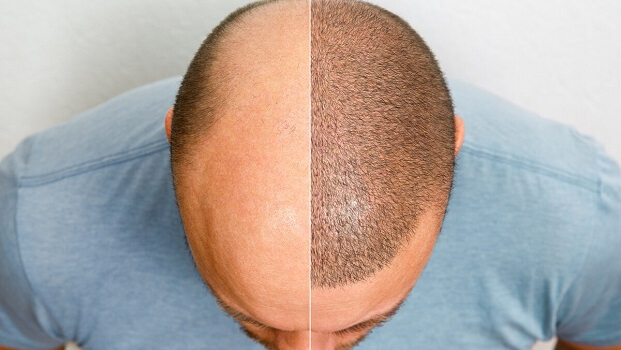Hair transplant surgery is a procedure that takes hair follicles from areas of the body where there is healthy hair growth and transplants them into thinning or balding areas.
The procedure usually involves removing individual grafts from the back and sides of the scalp, known as donor sites, and relocating them to the desired area.
It can also be used to restore eyebrows, beard, chest and other facial features.
Although results vary significantly from person to person depending on age, health status and genetics, most individuals who undergo hair transplant surgery can expect visible results within 6 to 9 months after the procedure.
In some cases, it can take up to 18 months for the full effects to be seen.
The success of a hair transplant is determined by how well the patient follows post-surgical instructions, such as taking medications prescribed by the doctor or avoiding certain activities that can affect healing, such as swimming or excessive exercise.
Furthermore, it is important for patients to understand that, due to natural fluctuations in hormone levels throughout an individual's life cycle, they may still experience some additional degree of thinning or balding even after undergoing a successful transplant procedure. -successful.
Ultimately, one must weigh all factors when considering whether this type of treatment will work for them before committing financially and emotionally to it.
Benefits of hair transplant
Hair transplant surgery is a safe and effective way to restore hair growth, especially in cases of male pattern baldness.
It works by taking healthy hair follicles from the donor area (usually at the back or side of the head) and transplanting them into bald or thinning areas.
The results are permanent as these new hairs continue to grow as they did before they were transplanted.
Hair transplants can also be used to fill in gaps caused by previous surgeries such as scalp reduction or brow lifts, allowing for a more natural look with better coverage.
The procedure also offers other cosmetic benefits, such as giving patients a more youthful appearance and restoring confidence in their physical appearance.
Also, if done correctly, there is minimal scarring or discomfort, which allows for faster healing times.
Hair transplant risks and side effects
Hair transplant risks and side effects can include infection, scarring, inflammation, bleeding and poor healing. In addition, there is a risk that the body will reject the transplanted hair or that it will not grow.
The most common side effect of hair transplant procedures is pain or tenderness in the scalp, which can last for several days after surgery.
Other potential risks are itching and swelling around the graft area, as well as temporary numbness in the scalp.
In rare cases, some people may experience an allergic reaction to the anesthesia used during the procedure, which can cause breathing difficulties, chest tightness and hives.
It is important to discuss any potential risks with your doctor before undergoing a hair transplant procedure.
Cost and Availability
Cost and Availability: The cost of hair transplant depends on the type of procedure and the extent of work required.
FUE transplants are generally more expensive than FUT, with average costs ranging from US$ 4,000 to US$ 15,000.
Prices may vary depending on the number of grafts needed, as well as any additional treatments your doctor or clinic may recommend.
Hair transplants are also not always covered by insurance, so it's important to check with your provider before scheduling a procedure.
In terms of availability, hair transplant surgery is available in many countries around the world including North America and Europe.
Many clinics offer online consultations to ensure you receive the right treatment for your needs.
Additionally, some clinics offer financing options that allow patients to pay in installments over time rather than all at once.
Conclusion: Does hair transplant work?
The answer to whether or not hair transplantation really works is a resounding yes.
Studies have shown that hair transplants are highly successful in treating baldness and other types of hair loss, with most patients satisfied with the results.
The procedure has also been shown to be safe, provided it is performed by a qualified and experienced surgeon.
When evaluating the effectiveness of a hair transplant, it is important to consider the individual's expectations and goals.
Some people may want thicker coverage in certain areas, while others may simply want to reduce overall baldness.
In either case, the goal of any hair transplant is the same: to create an aesthetically pleasing appearance that will help boost self-confidence and make you feel more attractive.
By carefully selecting a technique suited to each individual's needs, an experienced surgeon should be able to provide satisfactory results.
Overall, hair transplants can be very effective in restoring lost hair and improving the appearance of those suffering from baldness or thinning areas on the scalp.
However, as with any medical procedure, it is important for potential recipients to understand their own goals before undergoing treatment, so they can work with their physician to determine which solution will best meet those needs.

